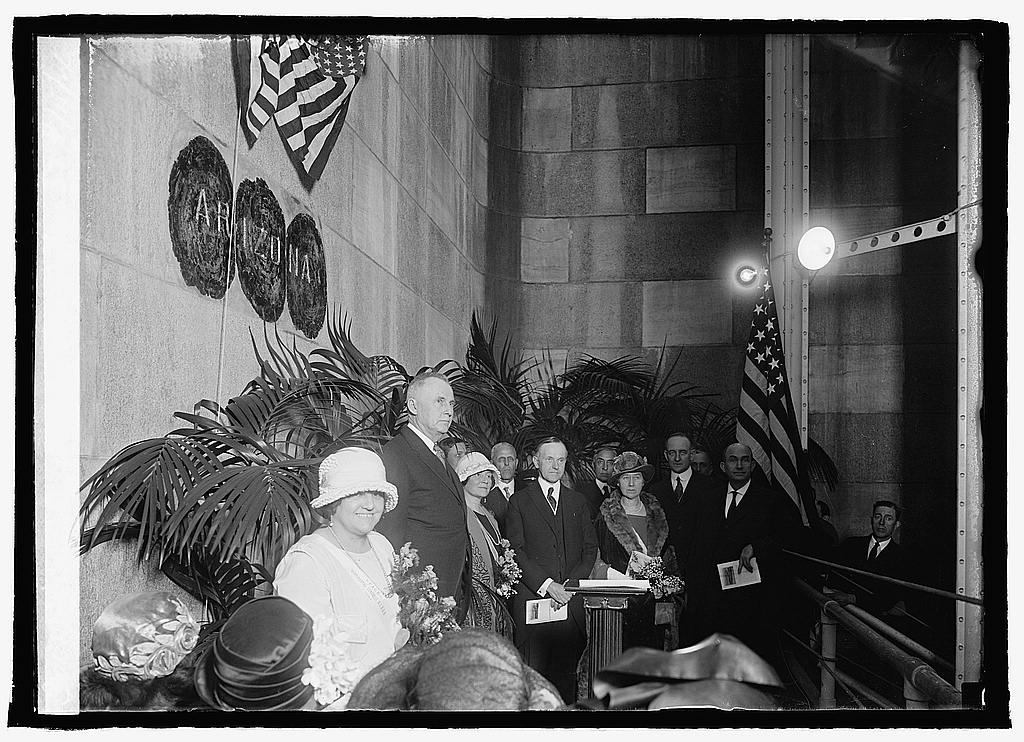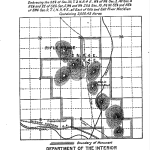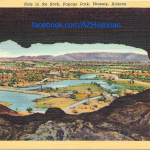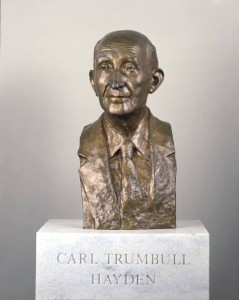
The assembled crowd of dignitaries and spectators present at the April 15th, 1924 dedication ceremony included President Coolidge, Senators Ralph Cameron and Henry Fountain Ashurst, Congressman Carl Hayden, and former Arizona Governor Thomas Campbell.
Image credit: Library of Congress
Senators Ralph Cameron and Henry Fountain Ashurst, Congressman Carl Hayden, and former Governor Thomas Campbell dedicated the Washington Monument’s Arizona stone ninety years ago this month. President Calvin Coolidge also spoke at the event, as did Nina Smith, the state Daughters of the American Revolution regent attending the ceremony as Governor Hunt’s official representative. Fittingly, our stone differs from those of all other states as it consists not of granite, marble, limestone, sandstone, or gneiss, but three slabs of petrified wood. The specimens displayed in the monument to President Washington were collected from the Chalcedony Forest near Holbrook, not far from the stunning and somewhat otherworldly landscapes of Petrified Forest National Park.

April 15th, 1925 Prescott Evening Courier coverage of the dedication ceremony.
Each state of the Union boasts a stone of its own in the Washington Monument, as do many cities, organizations, companies, individuals, and foreign governments. If the choice to embed three pieces of Arizona petrified wood into the walls of the Washington Monument was made out of a desire to draw attention to Arizona’s uniqueness, those in charge of the selection achieved their purpose. President Calvin Coolidge’s dedicatory remarks included reference to the state’s grand agricultural potential and significant mineral resources. Likely to the great pleasure of farmers throughout the Grand Canyon State, Silent Cal asked the assembled crowd, “Do we fully realize that the Valley of the Nile, producing sustenance for the mother civilizations, and long afterward serving as the granary of Imperial Rome, was not to be compared for area of productive possibilities to the great valleys of semi-tropic Arizona when they shall presently have been watered by the works of engineering, as the Nile was watered by the works of nature?” More closely related to the petrified wood forests from which the newly placed Arizona stone originated, Coolidge praised the state’s overall importance, saying, “its riches in forests, in metals and minerals, in the inviting glories of the world’s most wonderful scenery will make it one of the wealthiest states.”
While still in place, the various commemorative stones are no longer as accessible as they once were. Visitors to the monument were formerly able to choose between riding an elevator or climbing stairs to reach the 500-foot level observation deck. Those who chose the stairs were rewarded with up-close views of the many stones worked into the walls of the monument, none of which could be seen from inside the elevator car. Now, however, visitors must plan ahead if they wish to view the state stones as the obelisk’s elevator is the standard mode of passage to the top. Visitors hoping to take the more scenic — and cardio-friendly — route to the top of what was once the world’s tallest structure must reserve a special tour in advance of their visit (plan ahead – the Washington Monument is slated to reopen on May 12th of this year). Thankfully, those choosing to ascend to the top in a more expeditious manner can now view selected stones through the special gas-filled elevator doors that clear several times over the course of the ride to allow passengers a fleeting glance at the most notable stones.
For more information on the Arizona stone and other stones donated over the years, please visit http://www.nps.gov/media/photo/gallery.htm?id=1EFD723B-1DD8-B71C-07E7EC2F30C1E167.



